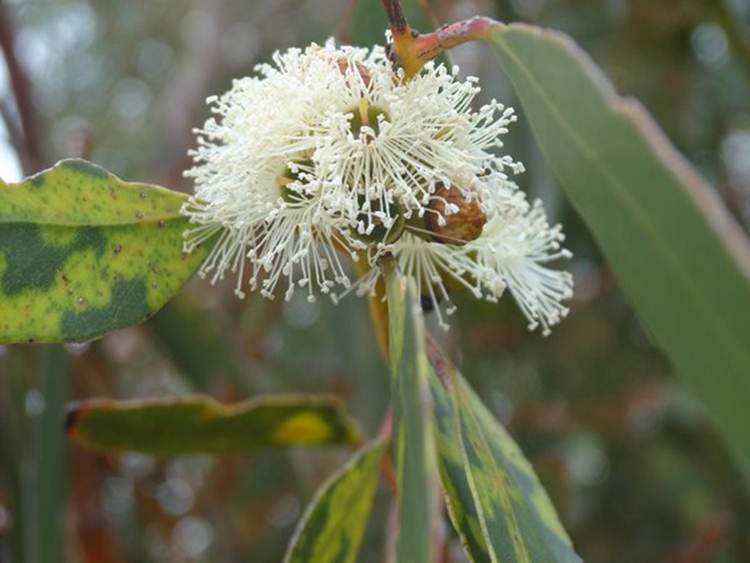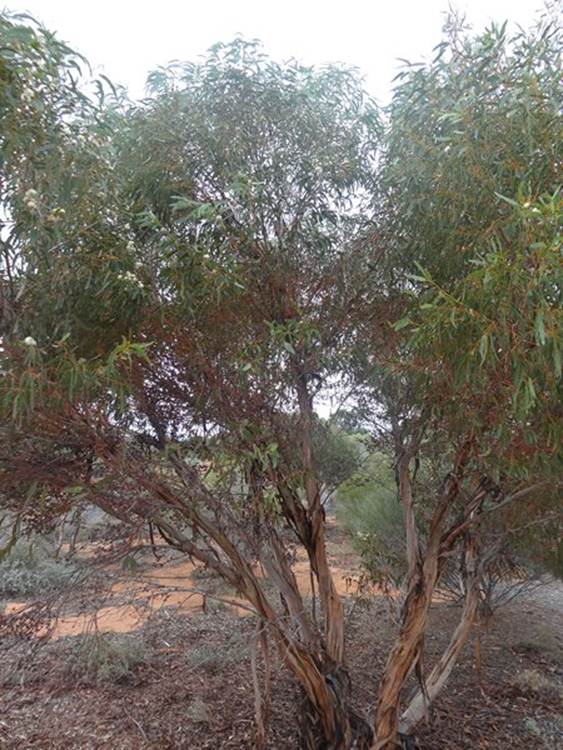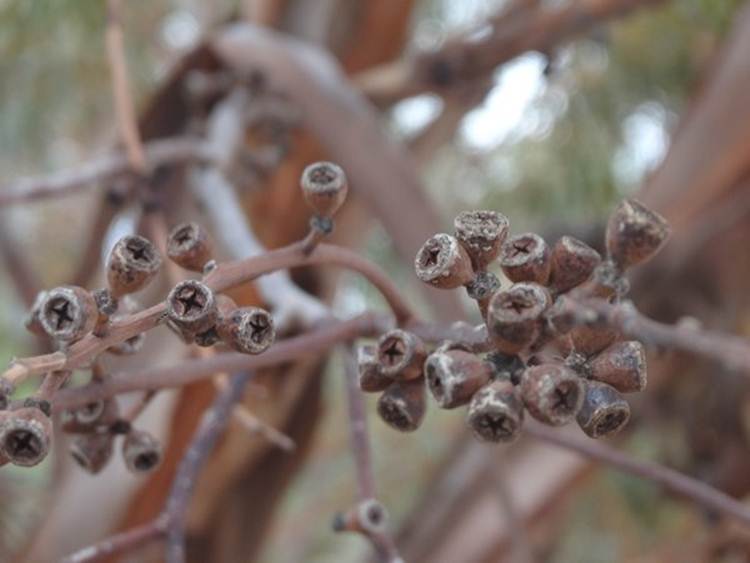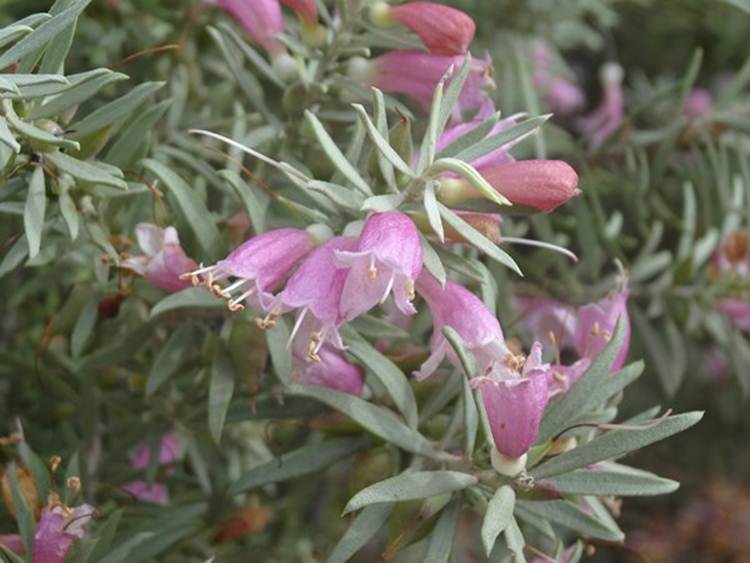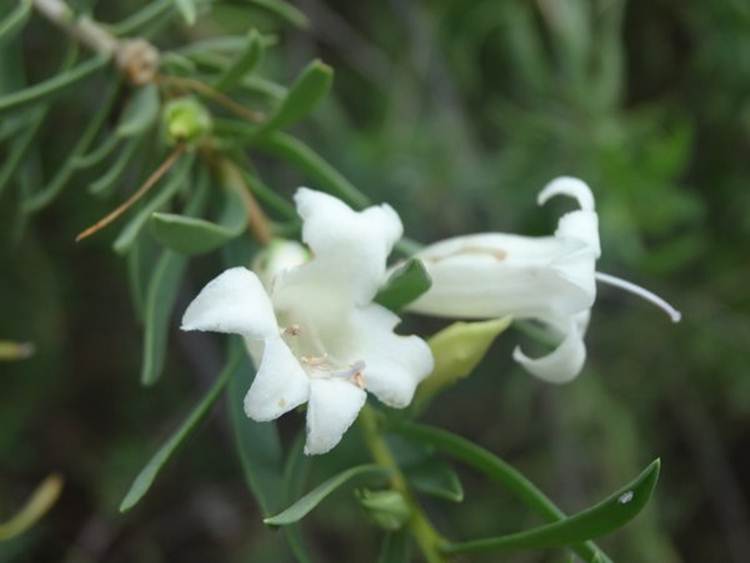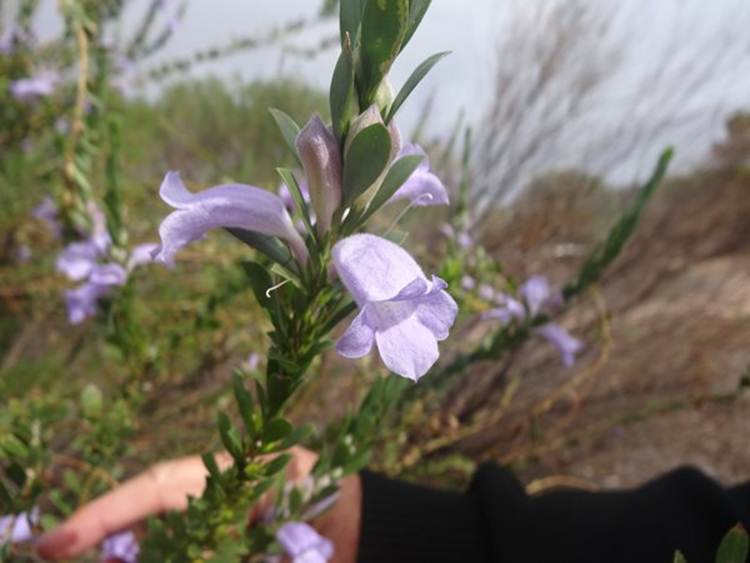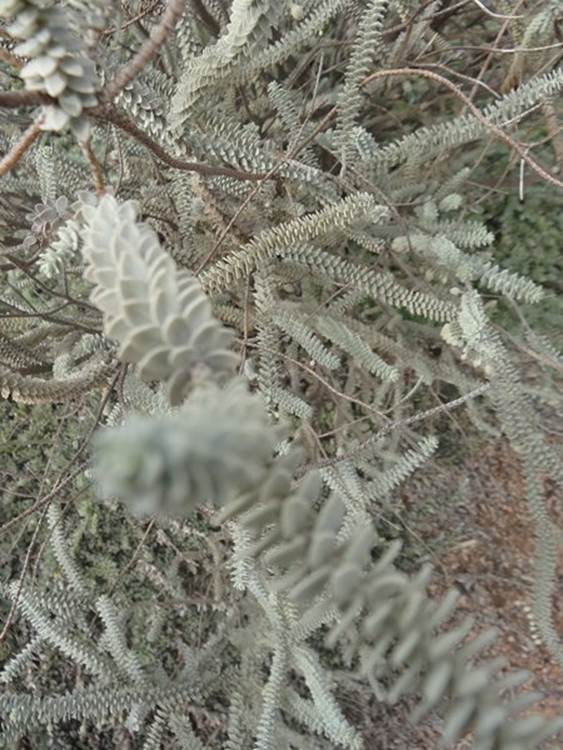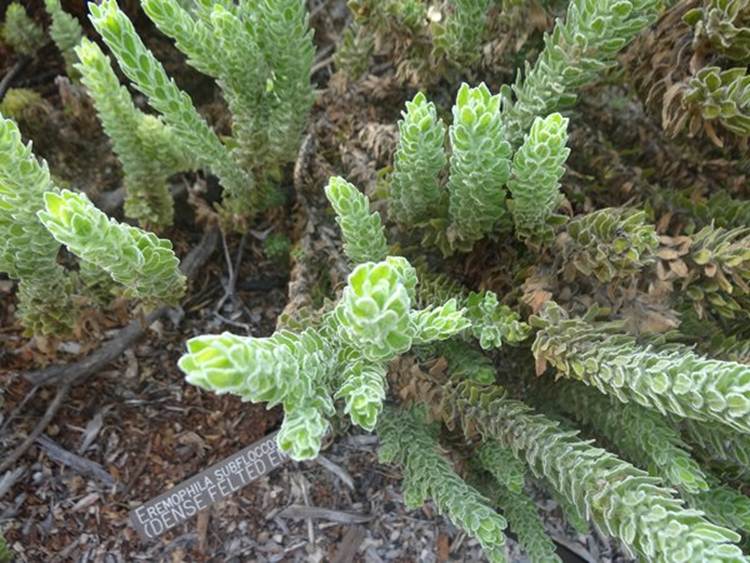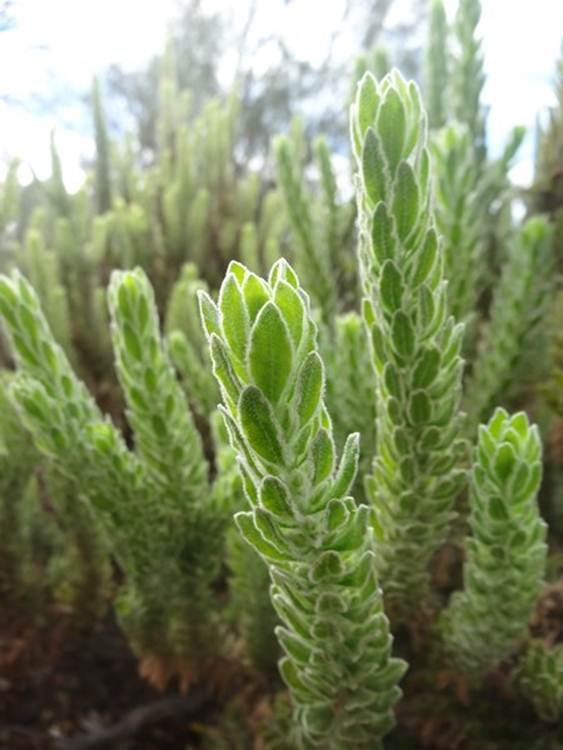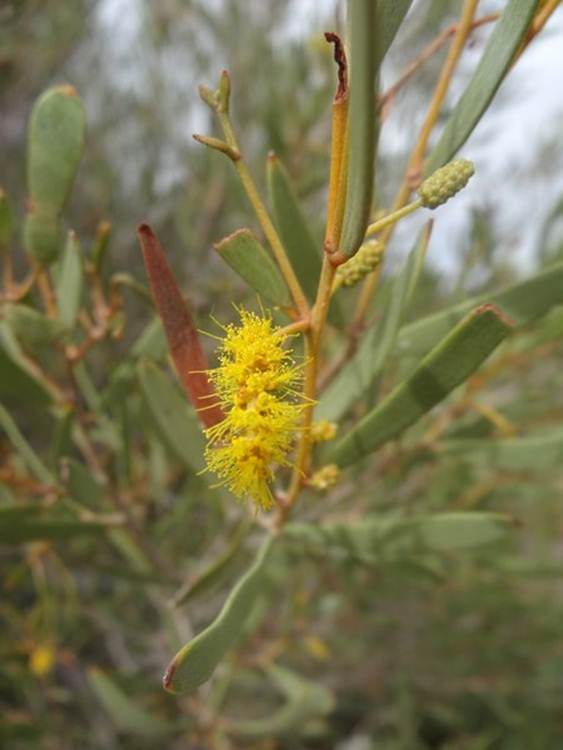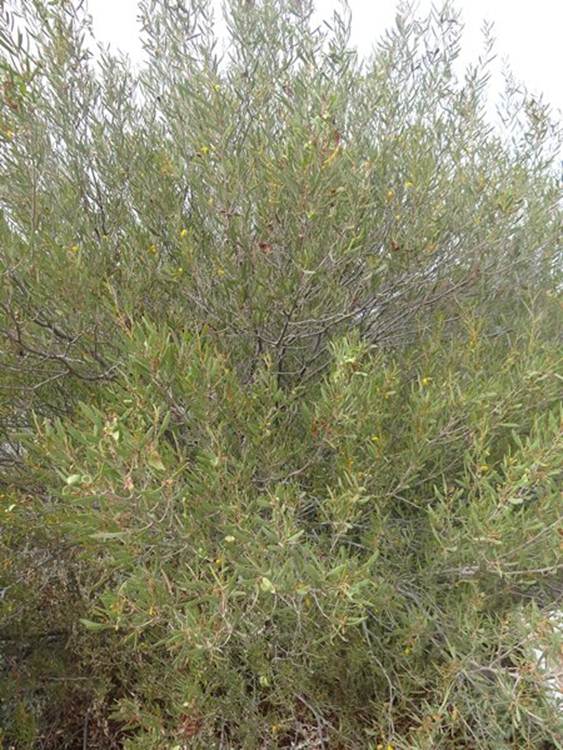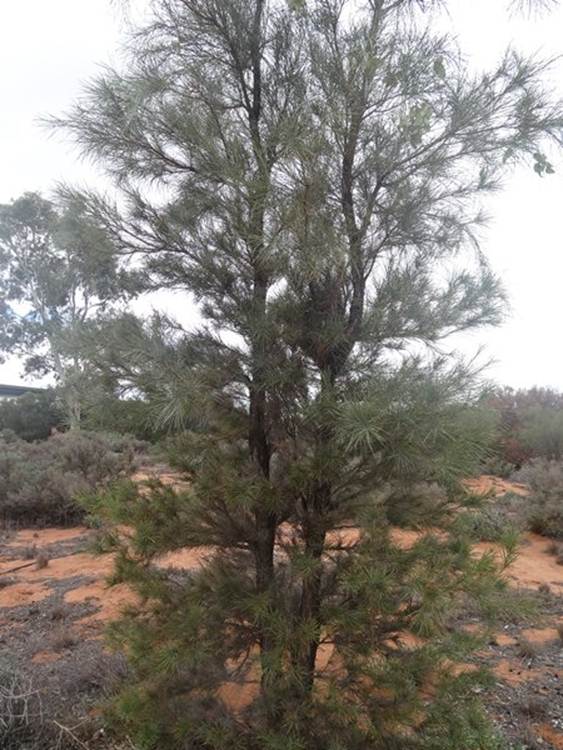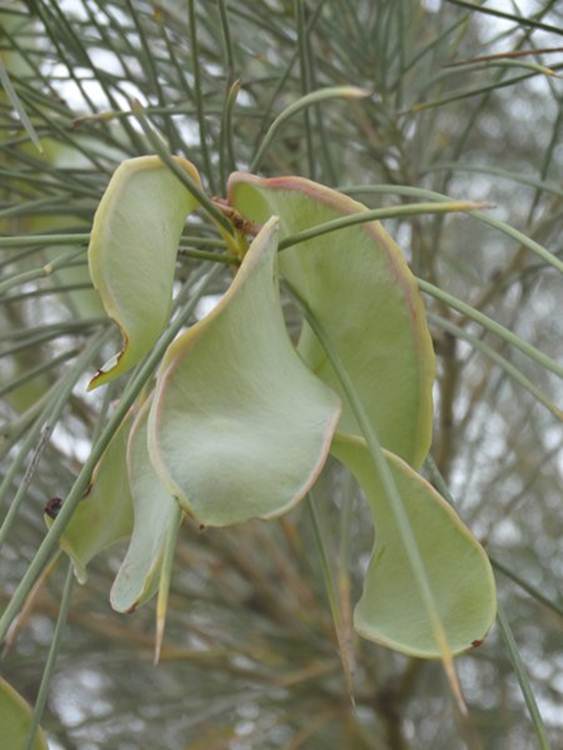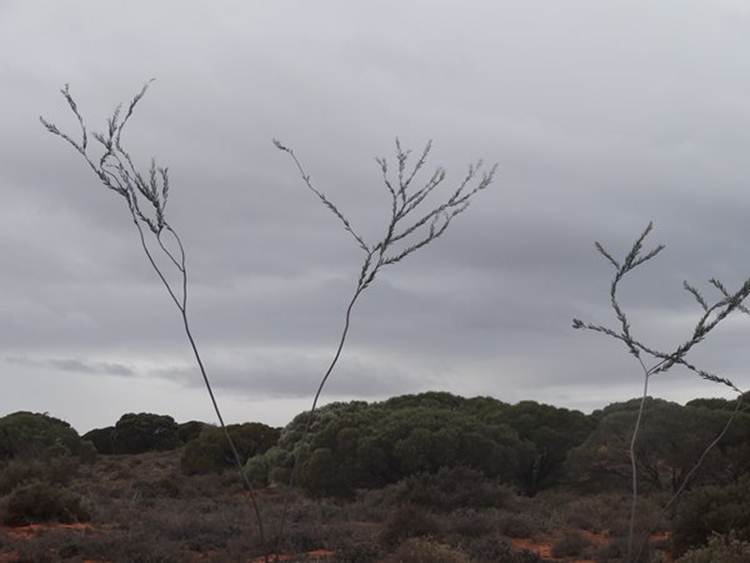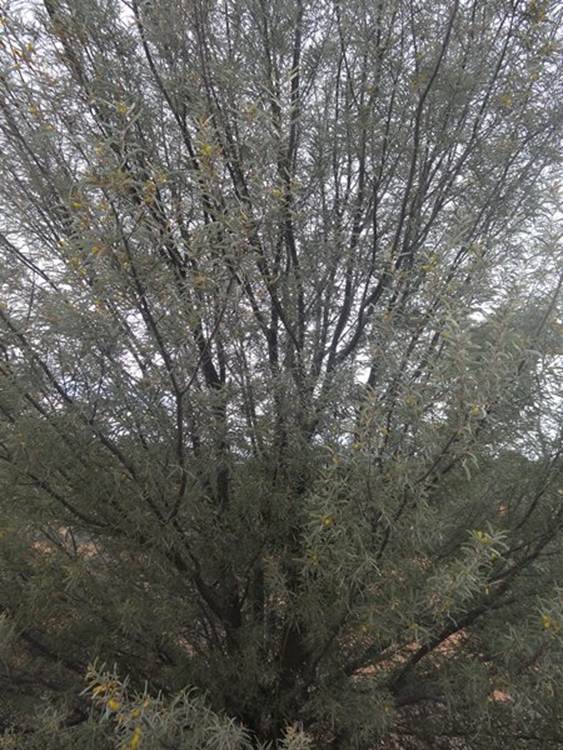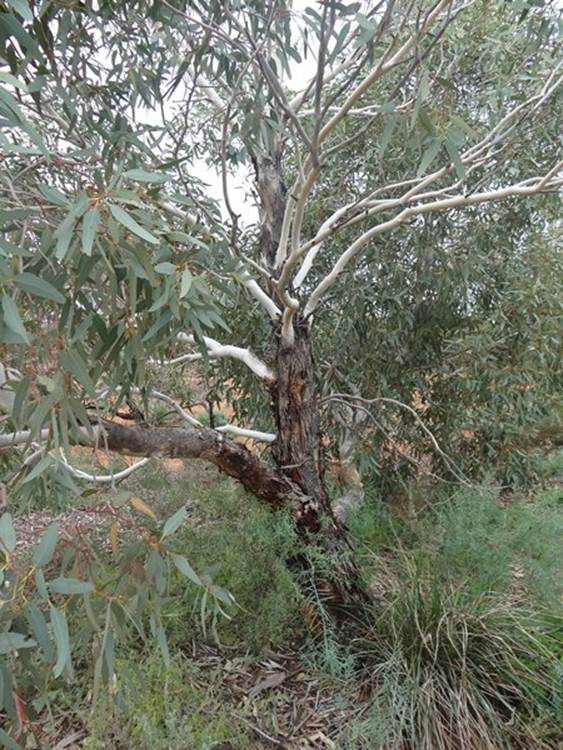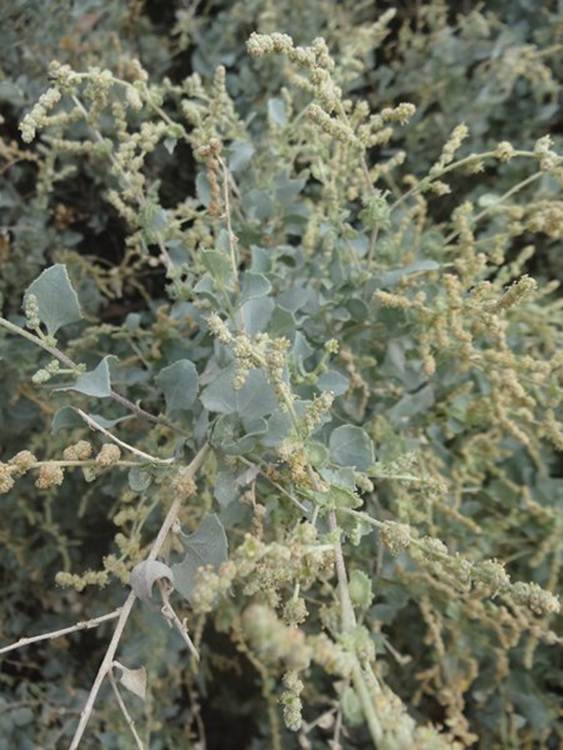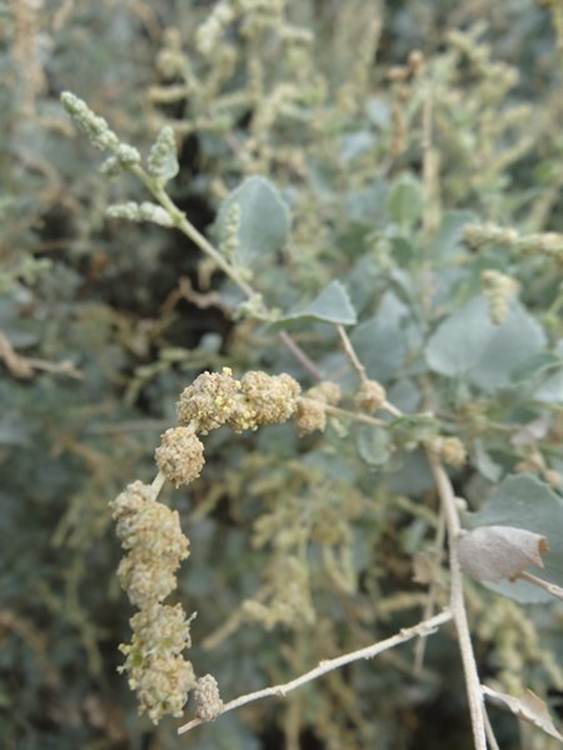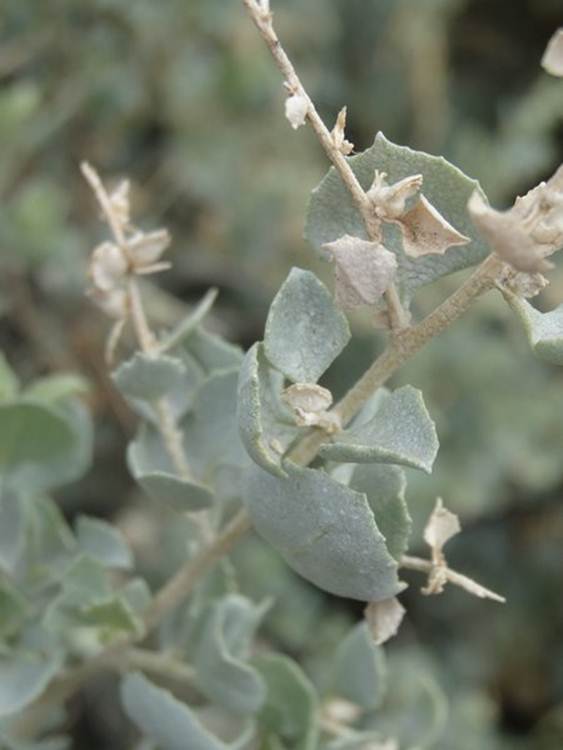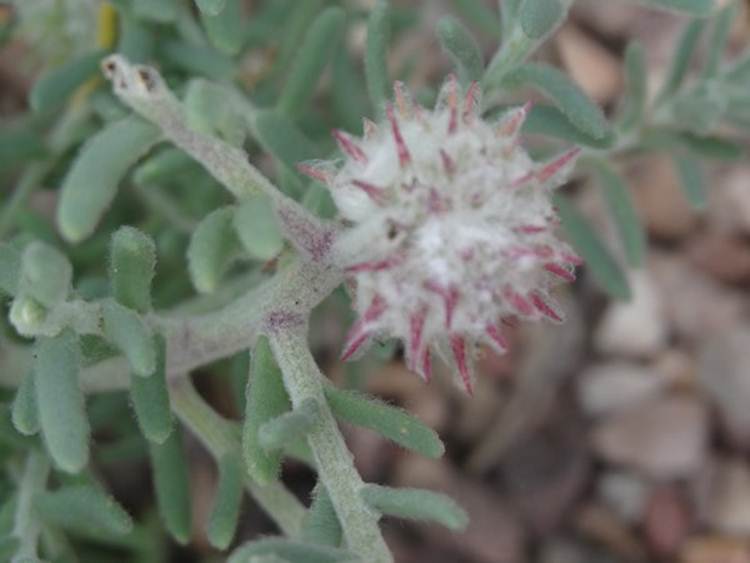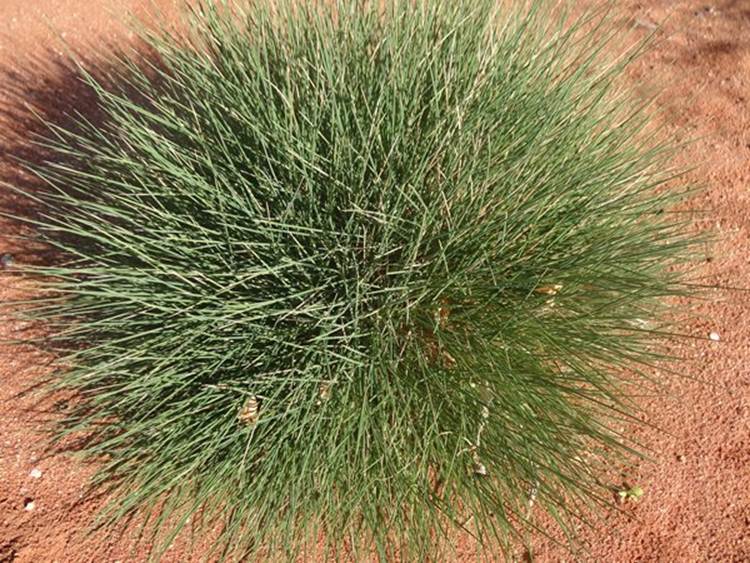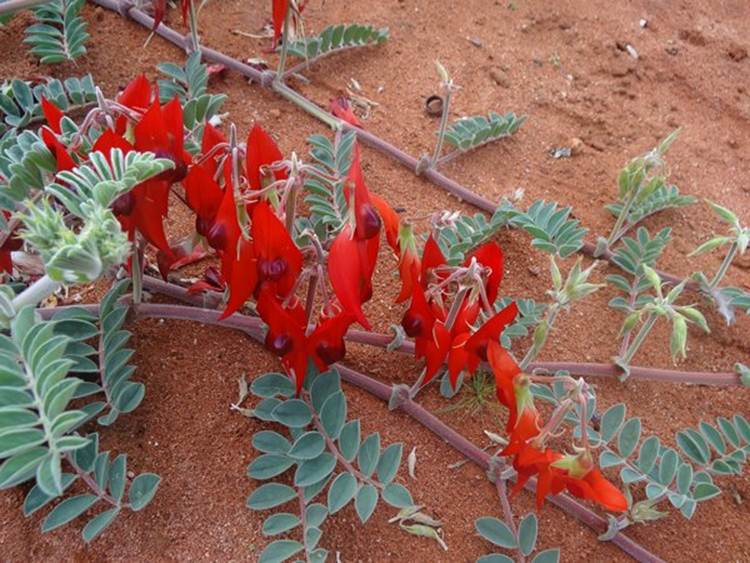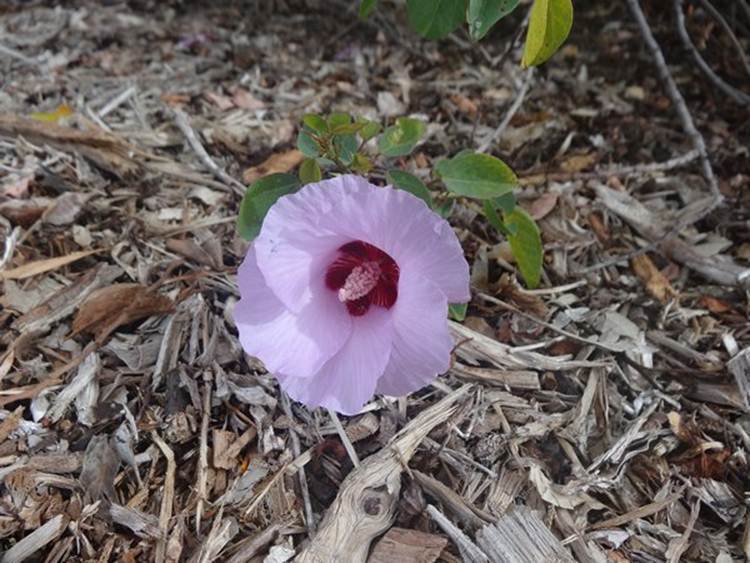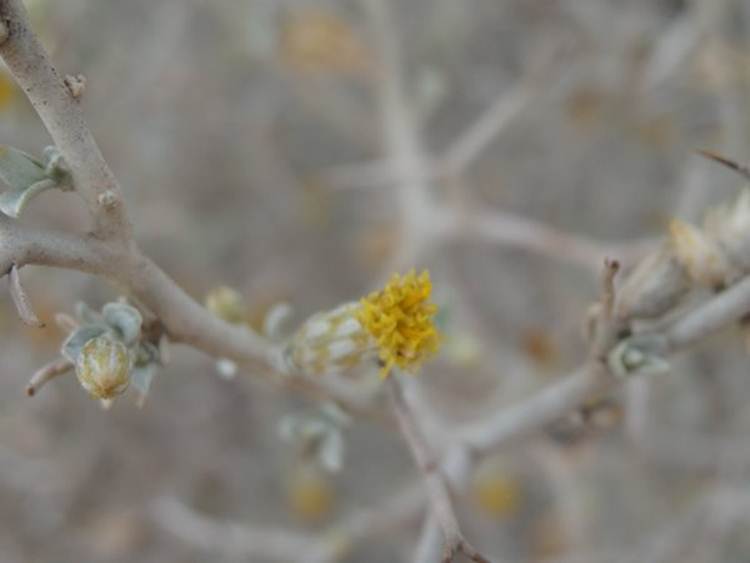Port Augusta - Arid Lands Botanical Gardens

We did a tour around the Australian Arid Lands Botanical Gardens. Told a lot about plants – most cannot remember, but here’s what I can. In no particular order.. Do you know why the eucalyptus trees shed their bark? Apparently its protection from UV light so they shed their presumably light damaged bark in autumn and prepare bark for next onslaught in the winter. What I also hadn’t realised up to this point is that the flowers and seed pods are usually on the inside of the tree. This one has oils in the leaves (the yellow patches).
In a fire, big whoosh as the oil catches light but the flames (may) pass then straight over the tree
leaving the seeds on the inside of the tree in tack.
The gardens hold a big collection of desert loving (Eremophila) plants. Lots were in flower, all very pretty. The flowers are either pollinated by birds or insects – most are either or, not both. A pink one
A white one.
Robert Brown (the botanist who explored the region with Matthew Flinders) collected several Eremophila sp. and named them. I think he sourced 5 or 6 from the area. Since then loads more found in the region and throughout Australia. They are also called emu bushes because the seeds need to pass through an emu to become viable. Here’s a blueish one.
They also have a great variety of leaf forms and heights. Arid zone plants typically have very small, sparse or needle like leaves to reduce their surface area and water loss by evaporation. Some arid zone plants have thick water-proof skins, wax covered leaves or leaf pores that close tightly to reduce water loss. Some have a waxy or powdery leaf surface to reduce sun damage. Each leaf here shades the one beneath.
Some have hairs on their leaves and stems that insulate, shade and protect the leaf and stem surface.
You can see the hairs clearly in this shot.
The gardens also had a big collection of Acacia, also called wattles in Australia. Stick to those Latin names, is what I say, and then there can be no mistake. Lots of variation in flowers and leaves but the leaves follow the same arid plant strategies. Here’s a yellow flowering one.
And a more green flowering one. The leaves wind around the stem and they flower either at the end,
Or along the branch. You can just make out the seed pods from the previous year in the top RHS of the picture.
They can grow really big some branch out a lot
Others not so bush like. This is waddy wood (Acacia peuce) which is really sort after by carpenters. It’s inner wood is purplish in colour. Not many of them left in the wild now.
And this is its seed.
This is Acacia toondulya. Beautiful, really flexibly trunk and bends in the wind.
This is Acacia ayersiana (Broad leaf Mulga). Mulga famous because occupies stretches of Southern Australia. It’s a multi-stemmed tree.
This one was in flower.
This is the coolibah tree – often wider than it is tall. Unfortunately gardener was around so I couldn’t go sit underneath it.
Quite distinctive with rough bark lower down the trunk and clean branches.
Can’t remember what these are other than this is the male:
Lots of dangly bits..
And this the female
The gardens also had a large collection of salt bush or blue bush plants. These are succulent plants and show the same variety of leaves that you have in the Eremophila. Succulent plants like these store water within their leaves and stems and can withstand high levels of dehydration. Lots die back to ground level and have drought underground storage roots which allow the plant to shoot up in more favourable conditions. Plants like saltbush can shed some or all of their leaves in times of severe drought. You can see the bloated leaves here, the fluffy bits are seeds.
The seed head here is covered in thorns and really sharp to touch.
This is much better picture of porcupine grass (Trioda irritans), also known as spinifex (but not of the genus of that name which refers to coastal grasses, confusing, stick to those Latin names).
This is Sturt desert pea (Swainsona formosa) the national plant of South Australia. Grows when it rains. Looks really alien to me. The black spot is the base of the flower and the flowers are in a cluster of 2 – 6.
Because the plant is so popular, plant breeders are trying to breed vigorous strains in lots of different colours for pot plants, hanging baskets etc. In nature it’s ground hugging and spreading.
Sturts desert rose (Gossypium sturtianum var. sturtianum), floral emblem of Northern Territories, the flowers only last one to two days.
This is the spiny daisy (Acanthocladium dockeri) first collected in 1860 by Burke and Willis expedition in south-western New South Wales.
It is critically endangered in Australia now. All those cows and sheep.
|
